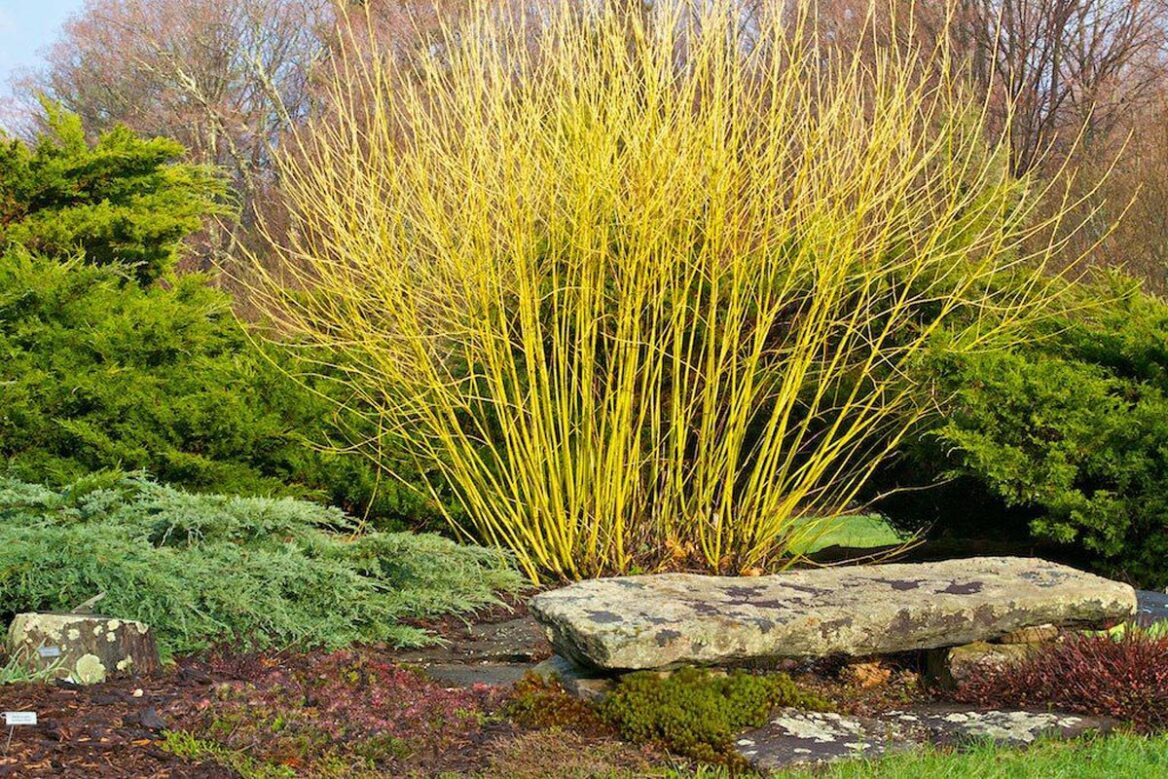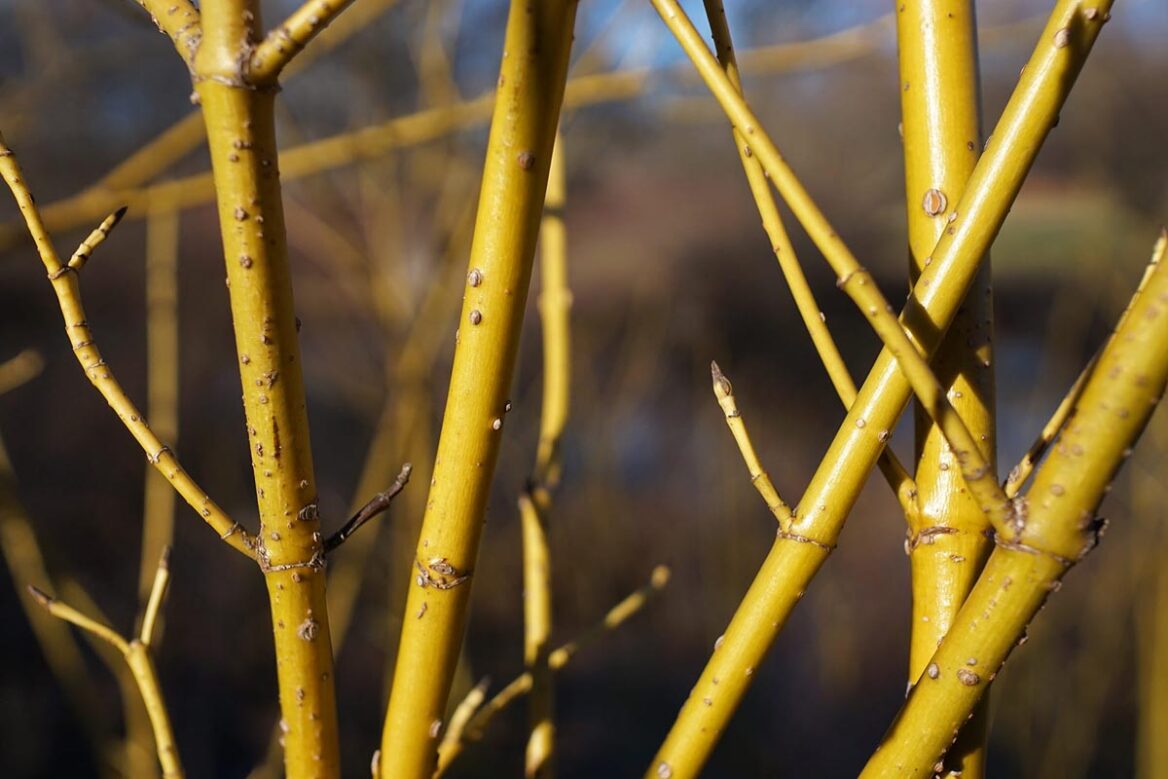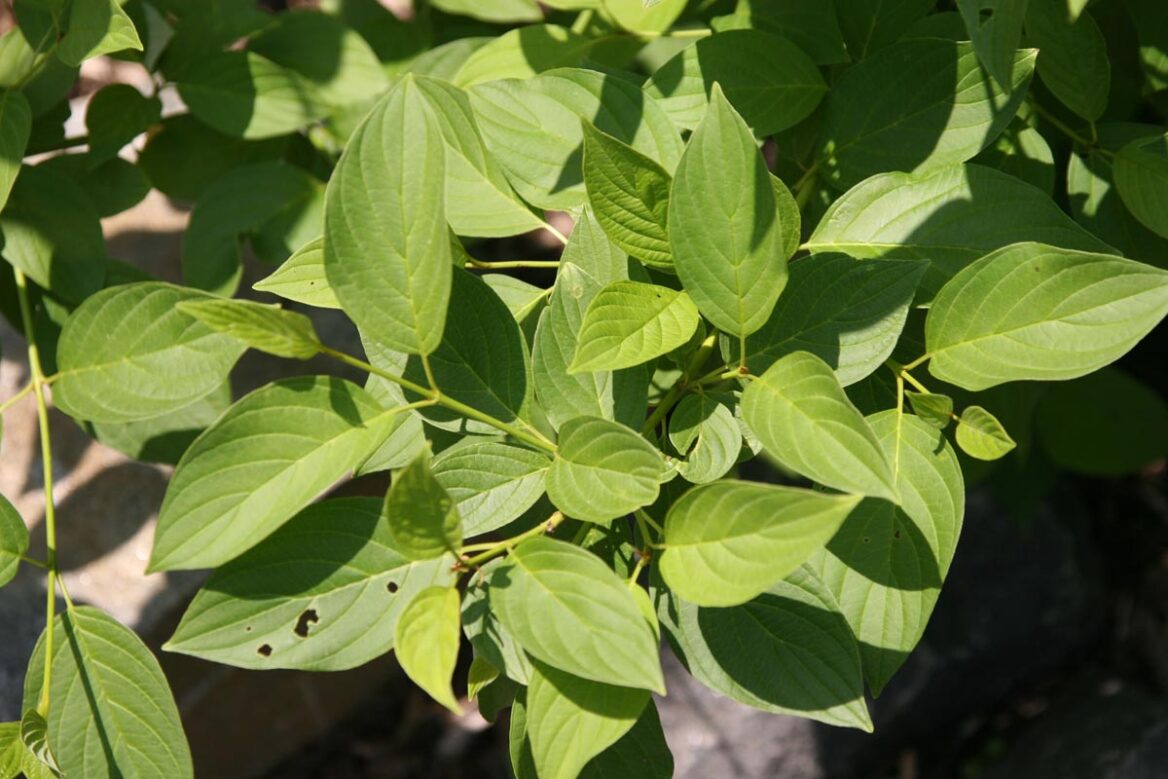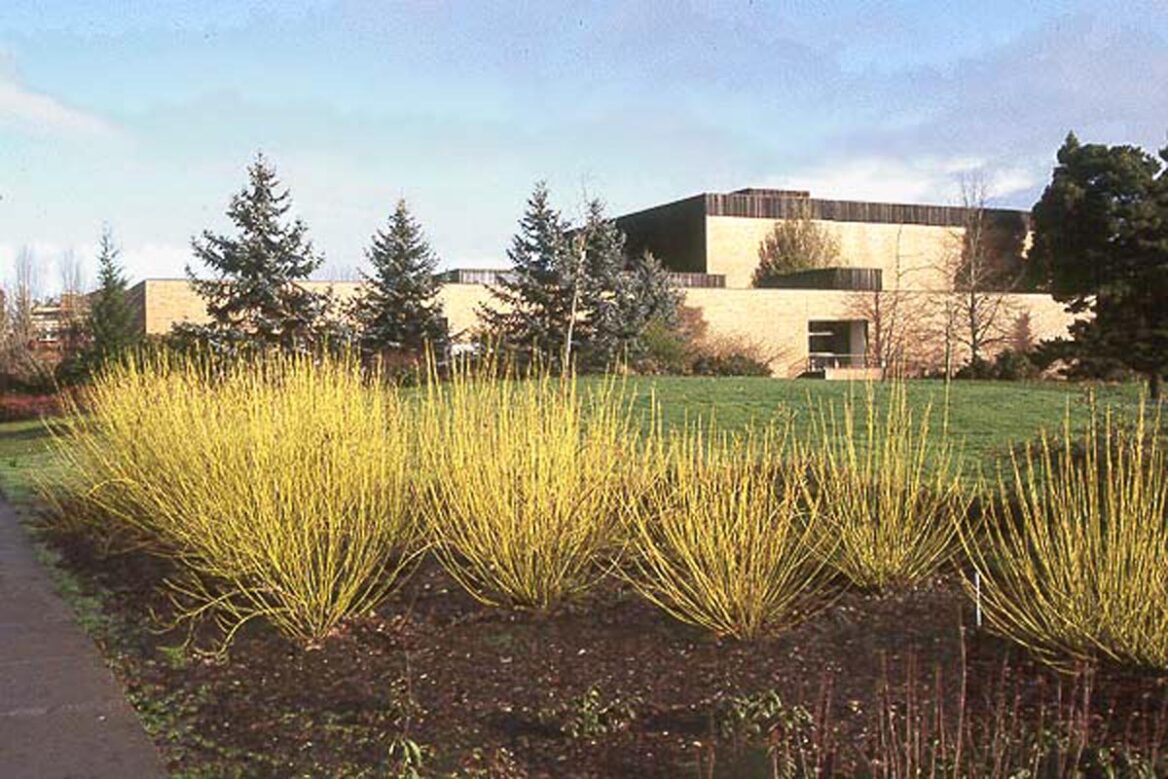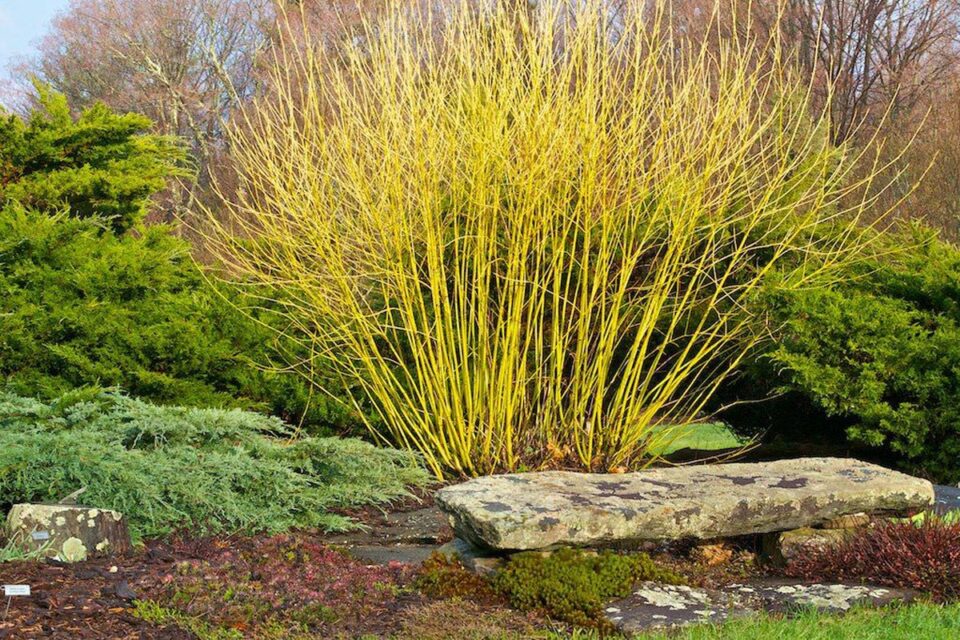Cornus sericea ‘Flaviramea’
Golden-Twig Dogwood
Cornus sericea ‘Flaviramea’ forms a thicket of erect, golden stems that provide a stunning sight in the winter when bare. It is tolerant of very wet growing conditions, making it a great choice for damp areas. When mass-planted, it creates a magnificent display. To promote new growth, Cornus sericea ‘Flaviramea’ should be cut back to the ground every few years. During the autumn, the leaves turn into beautiful shades of red and orange, making for a stunning display of colors. Additionally, Cornus sericea ‘Flaviramea’ produces small clusters of tiny, cream-white flowers in late spring, adding to its overall beauty. Cornus sericea is deciduous and native to much of North America. Learn more about Cornus sericea. Cornus sericea ‘Flaviramea’ was put into commerce by Späth Nursery in Berlin, Germany in 1899.
Other common name(s): Red Osier, Red-Osier Dogwood
Synonyms: Cornus sericea subsp. sericea 'Flaviramea', Cornus stolonifera 'Flaviramea'
$62.40 – $156.00
Deciduous
Height: 2.0m
Width:
1.0m
Estimated 10 year height and width
Cornus sericea ‘Flaviramea’ stock information
Full Stocklist| Grade | Height | Standard | Available | I/P | Qty / Price |
|---|---|---|---|---|---|
| P28 | 0.5m | 26 | 0 |
$62.40Add to cart |
|
| 25L | 1m | 2 | 0 |
$107.12Add to cart |
|
| 35L | 1m | 35 | 0 |
$156.00Add to cart |
